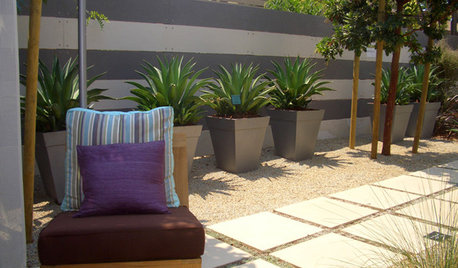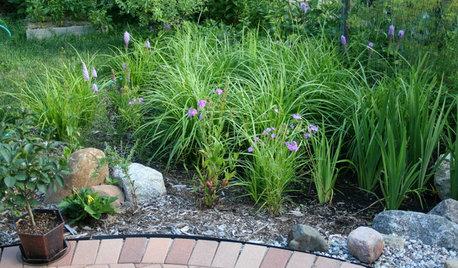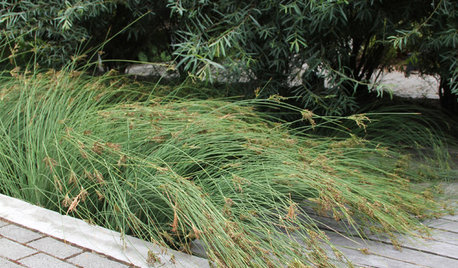Need to replenish soil after a month of rain?
Fred_in_Maine
14 years ago
Related Stories

GARDENING GUIDESHow to Pick a Mulch — and Why Your Soil Wants It
There's more to topdressing than shredded wood. Learn about mulch types, costs and design considerations here
Full Story
GARDENING GUIDESGardening Solutions for Heavy Clay Soils
What’s a gardener to do with soil that’s easily compacted and has poor drainage? Find out here
Full Story
GARDENING GUIDESHow to Stop Worrying and Start Loving Clay Soil
Clay has many more benefits than you might imagine
Full Story
GARDENING GUIDESHouzz TV: Make a Worm Bin for Rich Soil and Happy Plants
A worm-powered compost bin that can fit under a sink turns food scraps into a powerful amendment for your garden. Here’s how to make one
Full Story
GARDENING GUIDESSpring Citrus Care Reaps Months of Sweet Rewards
Learn how to tend citrus trees in spring and ways to preserve their delicious fruit
Full Story
GARDENING AND LANDSCAPINGPermeable Paving Soaks Up Rain
Design garden hardscaping that allows rain to penetrate through to the earth below
Full Story
FRONT YARD IDEASBefore and After: Front Lawn to Prairie Garden
How they did it: Homeowners create a plan, stick to it and keep the neighbors (and wildlife) in mind
Full Story
LANDSCAPE DESIGNHow to Site and Size a Rain Garden for Your Landscape
Installing a rain garden is an excellent way to reduce runoff and return water to its source
Full Story
GARDENING GUIDESProtect a Precious Resource With a Rain Garden
Promote pure water and a beautiful landscape with a garden design that makes the most of the rain
Full Story
MOST POPULARWhat to Do After a Hurricane or Flood
How you treat your home after a natural disaster can make all the difference in its future livability — and your own personal safety
Full Story


justaguy2
Fred_in_MaineOriginal Author
Related Discussions
whole month is wet,and i got clay soil
Q
Shrubs turning yellow 2 months after planting
Q
Is it normal for soil to remain wet for several weeks after rain
Q
How soon after rain can I work my clay soil?
Q
shihtzugirl75
pickinpink
avid_hiker
pickinpink
kanuk
Fred_in_MaineOriginal Author
avid_hiker
pickinpink
avid_hiker
pickinpink
avid_hiker
pickinpink
avid_hiker
pickinpink
pickinpink
Fred_in_MaineOriginal Author